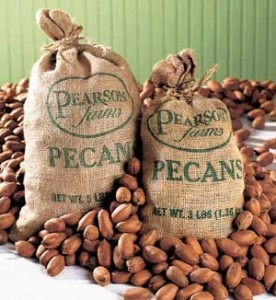
Typically harvested between October and December, pecans are extremely versatile. Just like turkeys symbolize Thanksgiving and pumpkins represent Halloween, pecans imply fall weather. This is especially true in the south. Pecans can be used to aid in cooking, gardening and landscaping. Consider pecans one of the fall seasons’ gifts to you. Unfortunately, the outside weather conditions can negatively impact the growth and production of pecans. Pecan farmers can typically tell whether or not a crop will be good each year. This depends on many different factors including heat and water. Harvesting pecans is a detailed process with many different stages. When the weather is right and the pecan trees are growing, pecans are produced with top quality and ideal taste.
Harvesting Process:
1. Split: When the tree is fully grown and matured, the skin around the pecans shell will begin to open. When the husks, or outer shells, of the pecan begin to split open, the pecans are ready for harvest. It is important not to proceed with this process until this has happened. This will ensure kernel darkening which, in turn, creates high quality pecans at a greater quantity.
2. Gather: A collector of pecans will either gather them from the ground or shake the tree to remove them. This process separates the ripe from the unripe nuts on a tree. The ripe nuts will fall to the ground during this process. The unripe pecans will stay put until they are ready to fall.
3. Inspect: Pecans should be closely examined so that nuts with holes or pecan scabs are thrown out.
4. Dry: Once the pecans have fallen, they go through a drying process to help get there golden color. As soon as the pecans have fallen, they start to decrease in quality and appearance quickly. This process speeds up even more when the pecans are moist. This is why it’s so important to gather the pecans immediately.
5. Store: Throughout the drying process, which can last up to two weeks, the pecans are stored in a cool, air tight location.
6. Crack: After this, if the shells break in half cleanly and the insides are completely brown, the pecans are ready. If they are not, they may need more time to dry.
Weather Conditions:
• Moisture/Rain: Pecans are harvested at moisture levels higher than storage levels. Pecans that are harvested earlier than usual contain about 30% moisture. The water content will decrease as the season goes by. The pecan tree grows depending on the soil type. The moisture retention can affect how the pecans and tree will grow. Once the pecans have been harvested, the moisture needs to be decreased greatly to prevent molding and discoloration.
• Droughts: A lack of moisture and extreme dry weather destroys the agriculture. The pecans go through what is called a nut-sizing period which requires water. Without water, the pecans will stay dry throughout the process and will lose their quality.
• Nutrients: The nutrients found in soil are very useful and necessary for pecan growth. These include nitrogen, minerals, zinc and iron. Each of these can reduce or improve the quality of pecans.
• Heat: Pecan trees, in general, can handle more heat than many other trees. In order to stay healthy during extreme heat, however, they must have good soil moisture. The longer the soil stays dry and the heat lingers, the tree and nuts tolerance will decrease and the pecans will be affected negatively.
• Freezing: If a late frost or freeze occurs then the blooms of a pecan tree may be affected negatively.
• Seasons: Pecans can have a poor growing season if the summer and spring were very dry and didn’t enable the trees to produce. By the end of the summer, in most cases, the pecan nuts will have reached their full size. This will give you a good idea of how big a pecan may be when it dries and falls in the fall.
Pecans lose their quality at a rapid speed once they have fallen. This is increased even more when there is rain. That’s why it is important to harvest the pecans soon after they have fallen. The process of harvesting pecans is very tedious, so visiting a local grower may be a better idea.


Leave a Reply